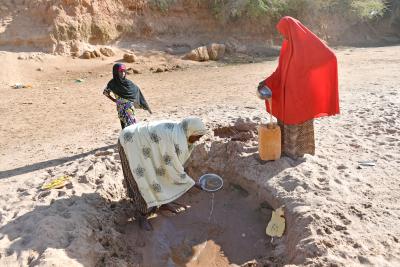 Mogadishu, Feb 9 (IANS) The UN and its partners, along with Somalian state and federal authorities, announced that humanitarian groups are seeking $2.6 billion to assist some 7.6 million people this year as the East African nation is currently under the grip of the longest and most severe drought in its history, following five consecutive poor rainy seasons.
Mogadishu, Feb 9 (IANS) The UN and its partners, along with Somalian state and federal authorities, announced that humanitarian groups are seeking $2.6 billion to assist some 7.6 million people this year as the East African nation is currently under the grip of the longest and most severe drought in its history, following five consecutive poor rainy seasons.
Nearly half of the population, 8.25 million people, need immediate help and protection from the drought that has devastated Somalia, reports Xinhua news agency.
Unless humanitarian assistance is sustained and rainfall is sufficient, famine is a strong possibility between April and June, according to an official statement.
“The efforts of local communities and the scale up of humanitarian assistance prevented famine thresholds from being surpassed in 2022, but millions of lives remain on the line,” said Adam Abdelmoula, UN Humanitarian Coordinator for Somalia.
It is the worst drought in four decades, which also affects parts of Kenya and Ethiopia.
The Horn of Africa has become hotter and drier due to climate change, and at least 36.4 million people across the region need emergency assistance to survive, according to the UN Office for the Coordination of Humanitarian Affairs (OCHA).
In Somalia, more than 1.4 million people have been displaced while at least 3.5 million livestock have died, which destroys livelihoods and reduces children’s access to milk.
Although technical famine thresholds have not been reached, OCHA said the situation in Somalia is extremely alarming as prolonged and extreme conditions have led to higher-than-normal deaths.
This includes more than 727,000 people who are likely to face catastrophic conditions.
Furthermore, about 8 million people do not have access to safe water, sanitation and hygiene services.
Cholera and measles cases have surged, along with acute malnutrition, while conflict and insecurity continue to drive needs and hamper humanitarian access.
Last year, aid organisations, local communities and government authorities ramped up response and reached 7.3 million people, but now they are calling for additional resources and unhindered access to those in need.
–IANS
ksk/











